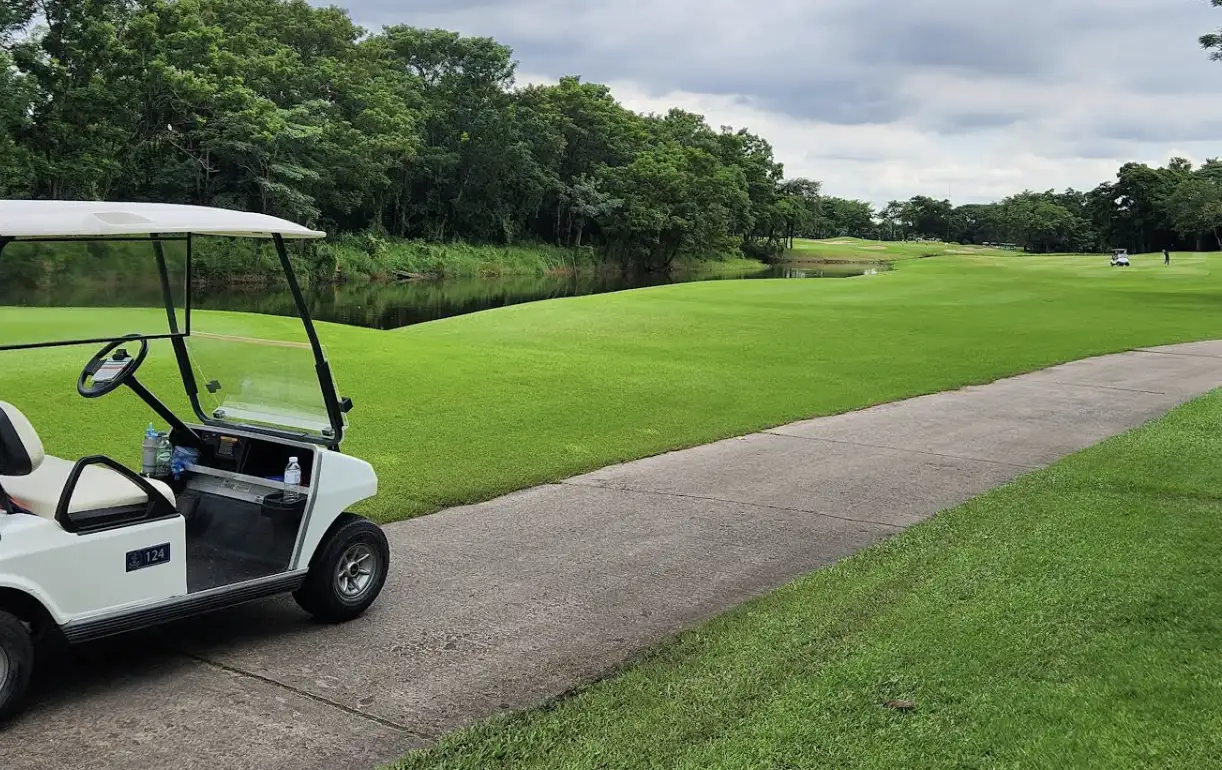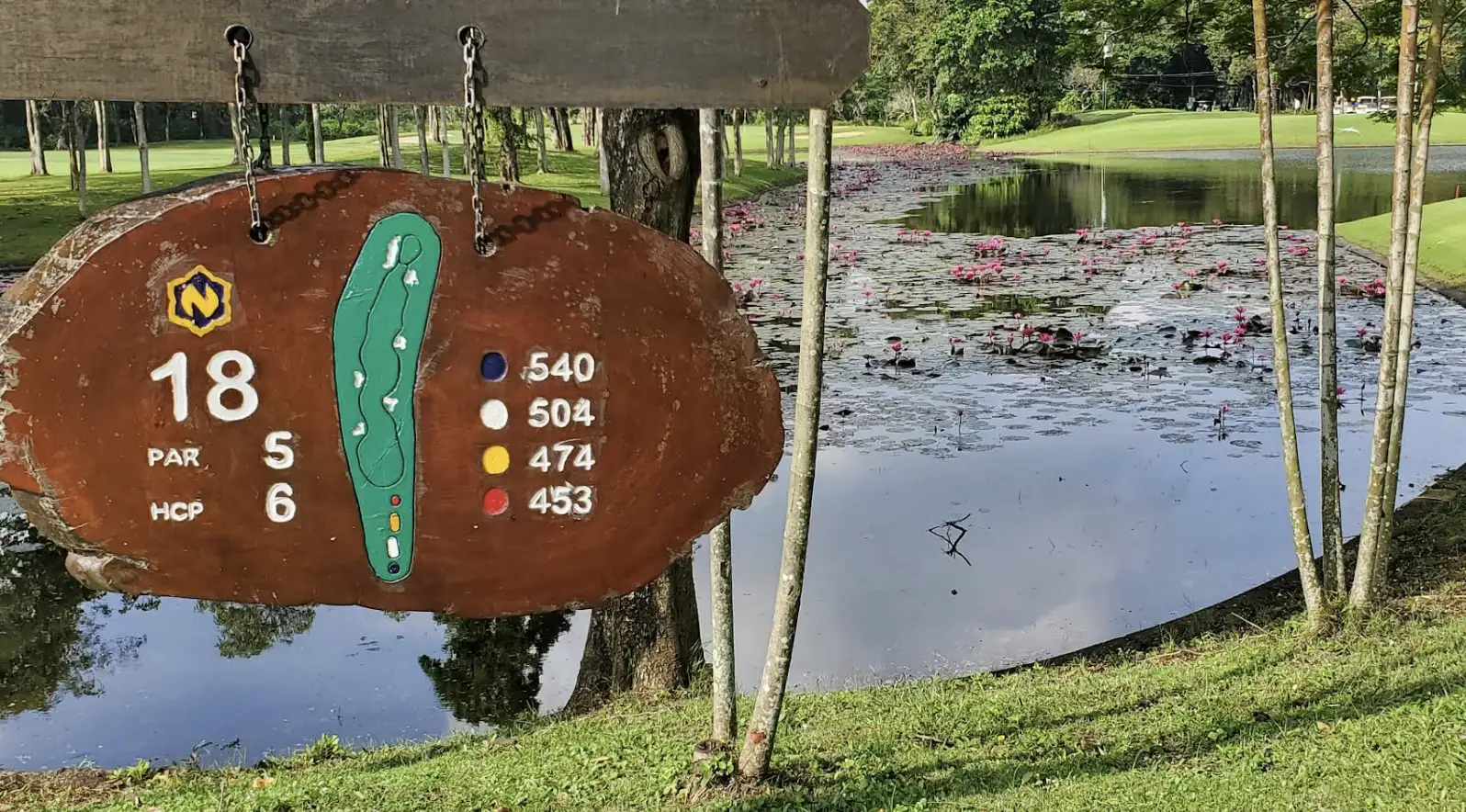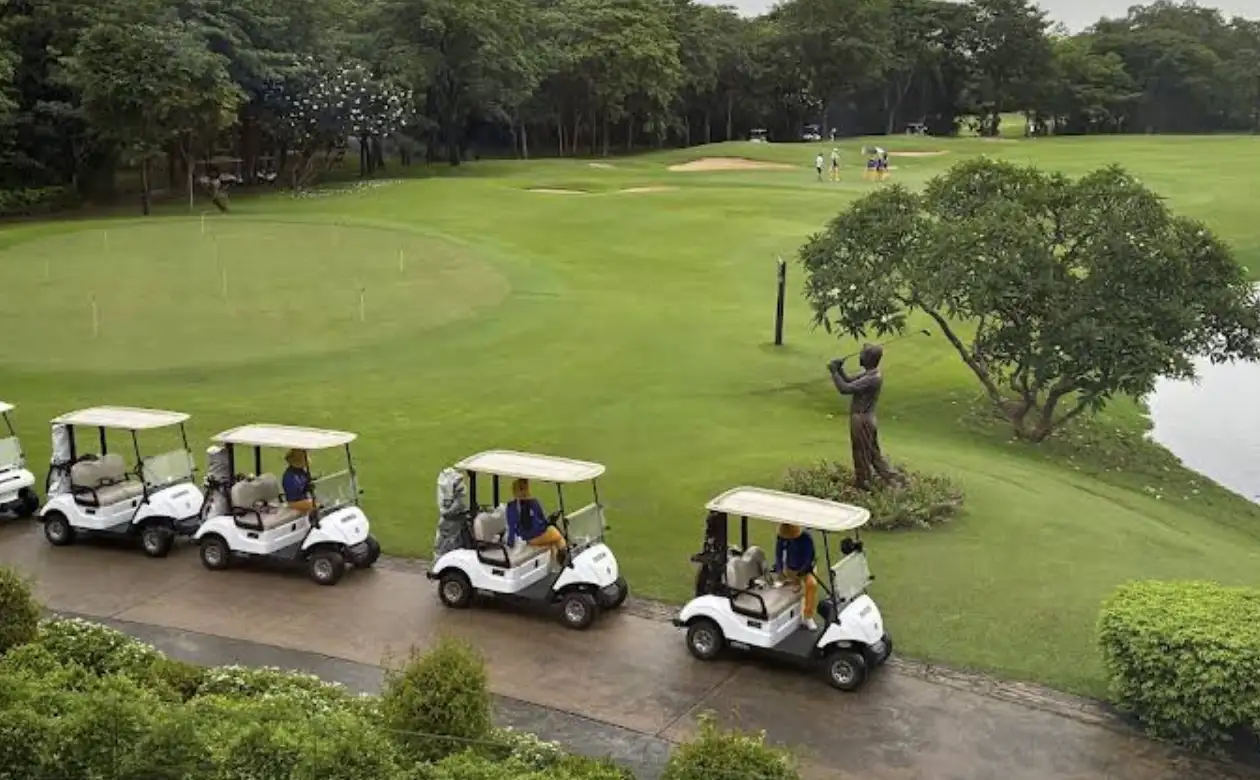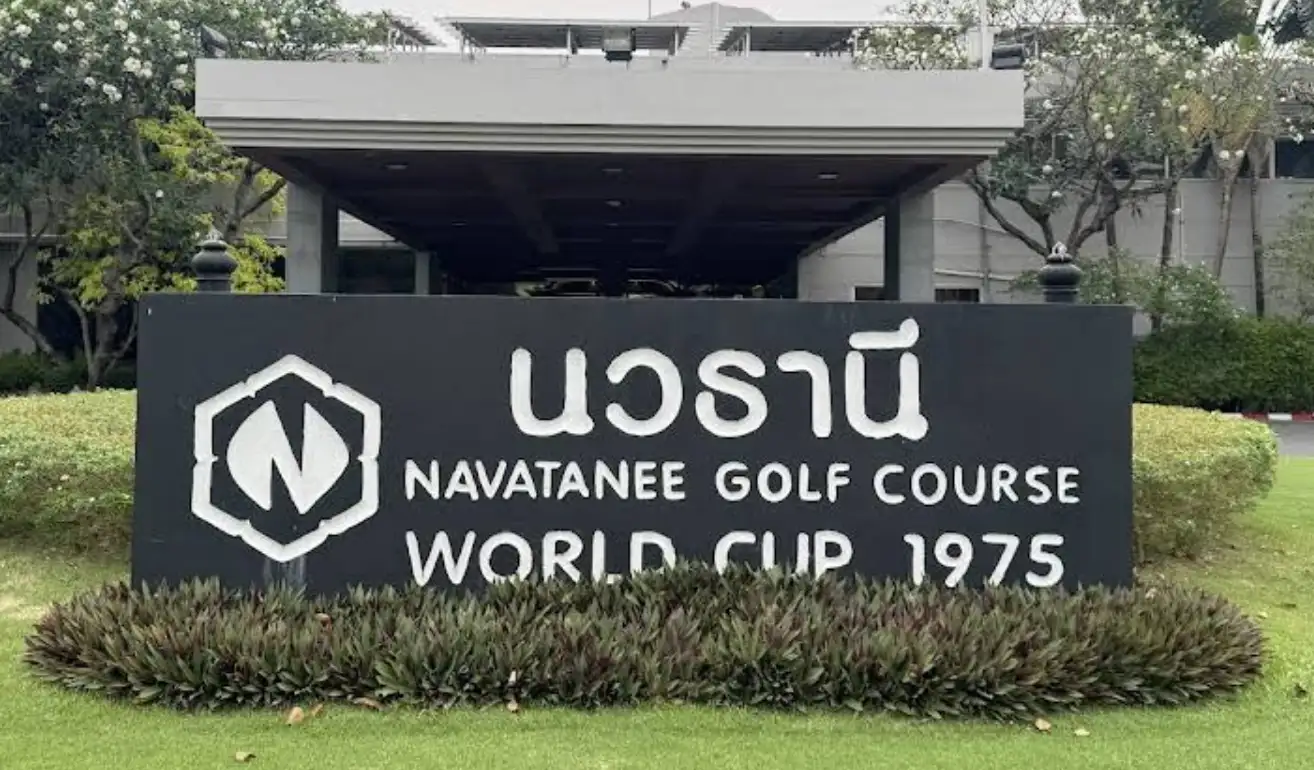When I think of Bangkok, my mind usually drifts to bustling markets, golden temples, and spicy street food. But on my last trip, I discovered a different side of the city—a serene, green escape at Navatanee Golf Course, located at 22 ถนน นวธานี Ram Inthra, Khan Na Yao, Bangkok 10230, Thailand. As someone who loves a good round of golf and appreciates a break from the urban grind, this course was a revelation. Designed by the legendary Robert Trent Jones Jr. and steeped in history, Navatanee is more than just a golf course; it’s an experience that blends world-class fairways with Thai hospitality and natural beauty. Here’s my take on a day spent at this iconic course, written from the perspective of a traveler and golfer who stumbled upon a true gem.
Finding Navatanee: A Journey Worth Taking
Navatanee Golf Course is tucked away in the Bueng Kum district, about 30-40 minutes from central Bangkok, depending on traffic. I’ll admit, getting there was an adventure in itself. Bangkok’s traffic can be a beast, so I opted for a Grab car to avoid the stress of navigating unfamiliar roads. The ride took me through the city’s chaotic streets before opening up to quieter, greener surroundings near Seri Thai Road. As we pulled up to the entrance, I was struck by how unassuming it looked—no flashy signs or over-the-top branding, just a understated gate that hinted at the prestige within.

Navatanee isn’t just any golf course. It’s one of Thailand’s most storied, having hosted the 1975 World Cup of Golf, where legends like Jack Nicklaus and Lee Trevino walked the fairways. Knowing this history gave me a little thrill as I stepped onto the property. The course was designed by Robert Trent Jones Jr., a name that carries weight in the golfing world, and it’s clear from the moment you arrive that this place is crafted with precision and care.
First Impressions: A Green Haven
Walking into Navatanee felt like stepping into a different world. The sprawling 18-hole, par-72 course is surrounded by lush greenery, with towering trees and manicured fairways stretching out as far as the eye can see. The clubhouse, while not overly modern, exudes a classic charm with its warm wood accents and friendly staff who greeted me with genuine Thai smiles. I arrived around 7 AM to beat the heat, and the morning light cast a golden glow over the course, making it look like something out of a golf magazine.

The course itself is a masterpiece. Spanning 6,902 yards from the championship tees, it’s challenging yet accessible for golfers of all levels. The fairways are impeccably maintained, with Bermuda grass that feels like a carpet underfoot. Water hazards and strategically placed bunkers add a layer of complexity, but the layout is forgiving enough that I didn’t feel overwhelmed as an amateur golfer. What stood out most was the tranquility—no honking horns or city noise, just the sound of birds and the occasional whack of a club meeting a ball.
Teeing Off: The Golfing Experience
I booked a morning tee time (around 2,500-3,000 baht, including caddie fees, which is standard for a course of this caliber in Thailand), and I was paired with a caddie named Noi, who turned out to be a game-changer. Thai caddies are known for their expertise, and Noi was no exception. She knew every inch of the course, from the tricky doglegs to the subtle breaks on the greens. Her cheerful demeanor and spot-on advice (like suggesting a 7-iron instead of my usual 6 for a tricky approach shot) made the round even more enjoyable.

The front nine was a great warm-up, with wide fairways that gave me confidence off the tee. Hole 3, a par-4 with a water hazard on the right, tested my accuracy, but Noi’s guidance helped me avoid disaster. The back nine is where things got really interesting. Hole 12, a par-5 with a narrow fairway and a well-guarded green, had me second-guessing my strategy, but landing my approach shot just short of the pin was a moment of pure triumph. The signature 17th hole, a par-3 with an island green, is as beautiful as it is intimidating. I didn’t quite stick the green (hello, water hazard), but the view alone was worth the swing.
The course’s design forces you to think strategically. Jones Jr. incorporated natural elements like lakes, canals, and gentle elevation changes, making every hole visually stunning and tactically engaging. I also appreciated the little details, like the well-placed rest areas with cold towels and water stations—much-needed in Bangkok’s humidity.
Beyond the Fairways: The Full Experience
Navatanee isn’t just about golf; it’s about the entire experience. The clubhouse restaurant was a pleasant surprise, serving up a mix of Thai and international dishes. After my round, I treated myself to a plate of khao soi (a creamy, spicy Northern Thai noodle dish) for about 150 baht, paired with a cold Singha beer. Eating on the terrace, overlooking the course, was the perfect way to unwind. The staff were attentive without being overbearing, and I felt like a VIP without the hefty price tag.
The facilities are top-notch, too. The locker rooms were clean and spacious, with hot showers and fluffy towels. There’s a pro shop stocked with gear and souvenirs, though I resisted the urge to splurge on a Navatanee-branded cap (barely). For those traveling with non-golfers, the surrounding area has a few attractions, like Seri Thai Park nearby, but the course itself is the main draw.
Local Vibes and Thai Hospitality
One of the things I loved most about Navatanee was how it balanced exclusivity with accessibility. While it’s a prestigious course, it doesn’t feel stuffy or pretentious. The staff and caddies were warm and welcoming, and I saw a mix of locals, expats, and a few international visitors like myself. During my round, I struck up a conversation with a Bangkok local who plays Navatanee regularly. He shared stories about the course’s history and even gave me tips on where to find the best street food in the area. It’s these interactions that make travel so rewarding.
Tips for Visitors
If you’re planning a visit to Navatanee Golf Course, here are some tips based on my experience:
- Book in advance: Tee times fill up, especially on weekends. You can book directly through their website or call ahead. I used a booking platform, which made it seamless.
- Arrive early: Morning tee times (6-8 AM) are ideal to avoid the midday heat. Plus, the course is quieter, and the light is perfect for photos.
- Bring cash: While the clubhouse accepts cards, it’s handy to have baht for caddie tips (100-200 baht is standard) or small purchases.
- Dress appropriately: Navatanee enforces a dress code—collared shirts, proper golf shoes, and no denim. Pack accordingly to avoid any hassle.
- Hire a caddie: They’re mandatory, but trust me, they’re worth their weight in gold. Their knowledge elevates the experience.
- Plan for traffic: Bangkok’s roads can be unpredictable, so give yourself extra time to get there, especially if you’re coming from downtown.
Why Navatanee Stands Out
Navatanee Golf Course isn’t just a place to play golf; it’s a destination that captures the essence of Thailand’s blend of tradition, beauty, and hospitality. The course’s pedigree—designed by a golfing legend and host to historic tournaments—gives it a sense of grandeur, but it’s the little things that make it memorable: the caddie’s encouraging smile, the breeze rustling through the palm trees, the satisfaction of a well-played shot. For golfers, it’s a bucket-list course that lives up to the hype. For travelers, it’s a chance to see a quieter, greener side of Bangkok.
As I packed up my clubs and headed back to the city, I felt refreshed and accomplished. Navatanee gave me a break from the urban chaos and a chance to connect with the game I love in a setting that felt both world-class and uniquely Thai. Whether you’re a scratch golfer or a weekend hacker like me, this course is a must-visit. Just don’t forget to pack your patience for that island green on 17—it’s a beauty, but it’ll test your nerve.

